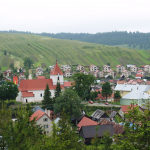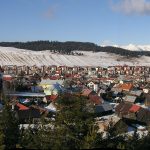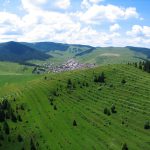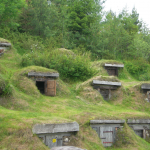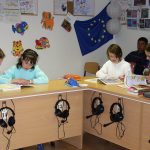Liptovská Teplička, Slovak Republic
Liptovská Teplička has 2,300 inhabitants and describes itself – very appropriately due to its location – as the “The stairway to heaven”. As the municipality is at the end of a valley on the north slope of the lower Carpathians, from where a unique landscape stairway over cultivated grassland leads up to the Tatra National Park and the Lower Tatra National Park. Although at the end of the valley the population grows continuously which suggests that here a lot of energy has been invested in improving working and living conditions.
An example for this is the 1879 founded, 1958 disbanded and 1989 reactivated forest collective that cultivates approx. 1,580 hectare forest – with modern technology as well as horses according to the requirements of the natural area. Most of the 300 members use their wood rights and therefore heat with local energy. The urbariat has 45 employees and also operates a newly built sawmill. It maintains partnerships with the football club, the school and the Red Cross and supports families who are less well off.
Farming is, despite the division in two cooperatives, still on a small scale and hardly mechanised which is due to the steep and sparse nature. Numerous dug out storage cellars for potatoes that are integrated into the area are a witness to an earlier more abundant farm land that must have existed. Today it is only five percent the rest is grassland. This radical and trend setting changeover to biological-ecological grassland and pasture farming took place after the reunification and has been coupled with aid programmes for several years that aim to maintain the species-rich grassland by mowing time regulations. As a logical consequence this results in a multi-sectional animal husbandry with the beginnings of upgrading towards cheese, wool and good quality slaughter cattle. Historical development and modern farming are reflected on the green stairway up to the tree line as a cultivated landscape unique in Europe.
Also the municipal concept is based on the stairway. The first step is landscape and contains the carefully embedded buildings in it. Even the communist era hardly changed the settlement area and left mainly buildings on an appropriate scale. These dominate the old buildings within the village amongst which as a special gem the group of farm buildings in the village catch the eye. Also the village ecology is not left out. Paved, surface sealed roads are kept to a minimum, the biggest majority of surfaces in the public area are green.
The second step refers to the maintenance of tradition. The inhabitants are Gurals, Polish, Russian, Slovakian immigrants from the north with their own language that is still alive today. Many village festivals, sports competitions and cultural events that are partially connected to tourism are based on their traditions. The third step is seen as communication. This ranges from a local radio station to weekly regional TV programmes in which along with tourist attractions, cultural, social and sports activities even clips of the municipal council meetings are broadcast.
The fourth step has as its theme partnership. Amongst several local, regional and trans-national concepts two special highlights stand out. On the one hand is the wide embedding of the, in view of didactic, impressive school in village events and on the other the exemplary handling of the Romas (gypsies) that constitute 25 percent of the village population. They are integrated without being assimilated. The children of the Romas (gypsies) got to school, many Roma work as day labourers in the community and at the same time at their own wish they live their own Roma life in their own quarter.
The fifth step on this stairway is aimed at economic viability that rests on the pillars of farming and forestry and tourism. About 400 beds with almost 50,000 overnight stays a year, two thirds of which are in winter and one in summer, appear to be an expandable basis for the future. Almost as self explanatory is that the universal idea of circulation is anchored here and what ends up on the table of the guests is predominantly local products.
The municipality Liptovská Teplička stands out for its holistic development that takes into consideration farming, building space, social, economic and ecological aspects in an exemplary way.
Evaluated: 2008

